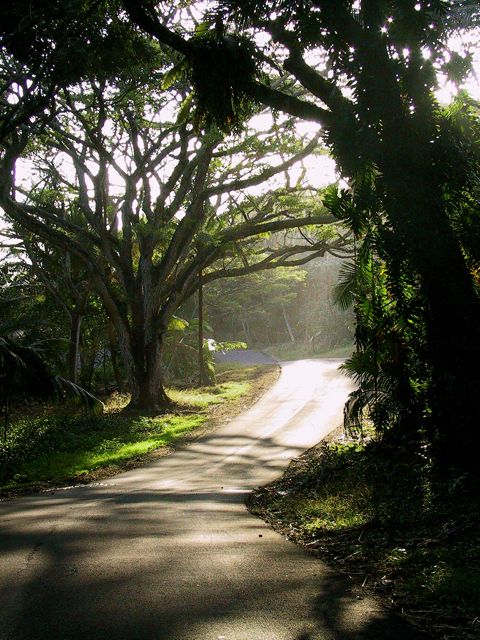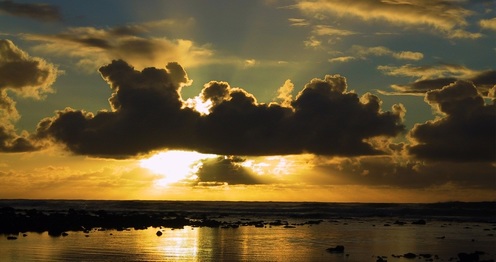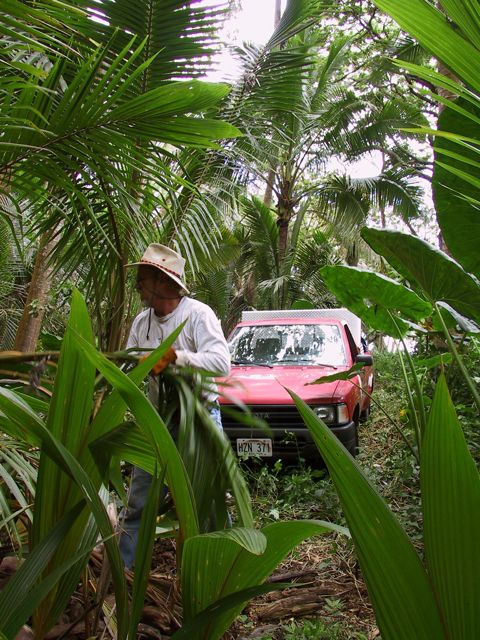Healing the earth and the human spirit through regenerative agriculture, appropriate technology, and the creative arts.
“What permaculturalists are doing is the most important activity that any group is doing on the planet. We don't know what the details of a truly sustainable future are going to be like, but we need options, we need people experimenting in all kinds of ways and permaculturalists are one of the critical groups doing that.” — David Suzuki, quoted in HopeDance 2009
Bringing forth the best within each of us through creativity, sustainability, and personal growth.
The Land is our Greatest Teacher
The Permaculture Foundation of Hawaii operates the small, off-grid Anawaiwela Permaculture farm in Opihikao.

Over the past decade, we learned a great deal from this piece of land. When we started, the vegetation was so dense that no patch of sky was visible from any point on the land. No human had done anything for these trees for 50 years, yet the land still pumped out quantities of breadfruit, coconut, avocado, mango, bananas, coffee, starfruit, limes, guava and oranges. Compared with conventional monoculture which can cost ten calories of fuel for every calorie on the dinner plate, this method of food production has clear advantages. Here, we get more calories out than we put in, while actually improving the soil quality, capacity for productivity, and the overall ecosystem. This exuberant growth in the natural world heartens us and gives hope among all the bad news about world-wide ecological degradation. It is good to feel that in some small way, we can give back to the earth.
We started in 2002 with a formidably dense jungle. After clearing and chipping the invasive circopia, a wide variety of food-bearing trees were planted, along with some tubers and a small amount of annuals, while preserving the mature trees. About 150 cacao trees may someday provide a cash crop of chocolate.
We started in 2002 with a formidably dense jungle. After clearing and chipping the invasive circopia, a wide variety of food-bearing trees were planted, along with some tubers and a small amount of annuals, while preserving the mature trees. About 150 cacao trees may someday provide a cash crop of chocolate.

The Hawaiian farmers who inhabited this land in generations past created self-sustaining food forests that continued long after they were gone. They practiced a type of Permaculture called Polynesian Polyculture. No crop was planted in clusters over 1/10 of an acre, and the combinations of various plants helped each other to thrive. Some plants fix nitrogen; others are dynamic accumulators with deep roots bringing minerals to the surface; others provide shade and mulch. In this way, the whole symbiotic system eventually becomes self-generating, without a lot of human intervention. While it tends to look much wilder than the typical garden, this type of food production is vastly wiser than the industrial method, which is basically extractive and destructive. Industrial monoculture depletes the soil and aquifers, pollutes the ocean with fertilizer runoff, creates saline seeps, toxifies the environment with herbicides and pesticides, promotes crop diseases, decreases biodiversity, and sickens consumers. Our industrial food system creates dependency and passivity among the population. In contrast, Permaculture fosters community self-reliance while increasing soil fertility and biodiversity. This closeness with the earth creates an intuitive awareness of the interconnectedness of humans with the natural world.

The need for transition to a new way of life is poignant in Hawaii because of its unique history. Due to its long and vulnerable supply chains for all consumer goods, Hawaii is the most oil-dependent state in the US. This is the most isolated chain of oceanic islands on the planet, yet the contemporary way of life in much of the state is remarkably similar to the continental US. In contrast, the history of the Hawaiian people is one of startling self-reliance and perseverance. Before the Hawaiians discovered these islands perhaps 1000 to 1800 years ago, there were almost no edible plants growing here. Even the iconic coconut palms were brought by the Polynesian explorers who landed here in their outrigger voyaging canoes, bearing some two dozen of their most treasured plants. Many of these plants were linked so intimately with the Polynesian people, that the plants have evolved to no longer bear seed, but depend on humans for their propagation. These valuable “canoe plants” introduced by the early Hawaiians allowed a complex civilization to flourish. This example of courageous ingenuity gives hope and inspiration to us all as we seek ways to become self-sufficient in response to the challenges of our own times.

At Anawaiwela Farm, we started with the basis for self-sufficiency by first building a fero-cement water tank for rainwater storage. When we built the structures, we used the roofs for water catchment and power generation, by installing photovoltaic and solar hot water systems. When we had to cut a monkeypod tree for the house site, we milled and stickered the lumber, let it air-dry for five years, and had a local craftsman create cabinets from the monkeypod wood. While this approach teaches patience and humility, it breaks the expectation of instant gratification so prevalent in our culture. As the farm gradually matures, food production continues to develop, though the food forest planted some fifty to a hundred years ago out-produces everything we have planted in the past decade by far. Most importantly, we learned every step of the way. It is this process of learning that is the biggest gift of the experience at Anawaiwela Farm, which is what we have to share with others.